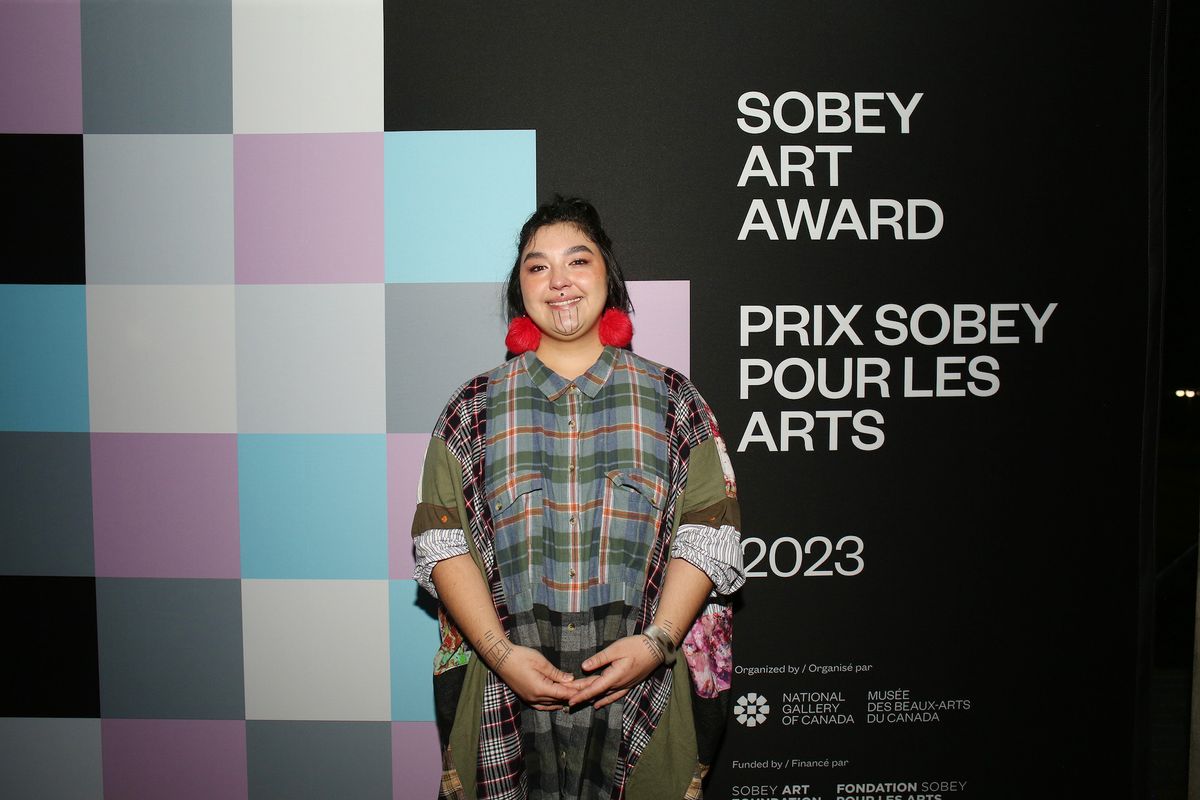The starving artist may be a thing of the past, but it sure helps your practice when you are the recipient of a major cash prize and in Canada none is more major than the Sobey Art Award, which puts C$100,000 ($73,000) into the winner’s pocket. The 2023 winner, announced in a ceremony on Saturday (18 November) at the National Gallery of Canada (NGC) in Ottawa, is the Inuvialuk multidisciplinary artist Kablusiak.
Each year, one artist from each of five different Canadian regions is nominated for the prize. Kablusiak was the shortlisted artist from the Prairies and North region, an area they know well, having been born in Yellowknife, Northwest Territories, raised in Edmonton and now calling Calgary home.
This marks the third successive year that the shortlisted artist from the Prairies and North took top honours, following 2022 winner Divya Mehra and 2021 winner Laakkuluk Williamson Bathory. Both previous winners were on hand Saturday night, sharing a table, too, with Mehra taking the stage to reveal the 2023 winner.
“I feel like it’s a secret, hidden gem,” Kablusiak said of the region. “It’s an amazing area of the world to be in.”

Kablusiak, Red Ookpik with Hat, Red Ookpik, Plucked Ookpik, Furby Ookpik and Garfield Ookpik, 2021-23. Collection of Marnie Schreiber; Collection of Frank Griggs and Jeremy Laing Courtesy the artist and Norberg Hall, Calgary. © Kablusiak. Photo courtesy National Gallery of Canada, Ottawa
The other finalists this year were Séamus Gallagher (representing Atlantic Canada), Anahita Norouzi(Québec), Michèle Pearson Clarke (Ontario) and Gabrielle L’Hirondelle Hill (West Coast and Yukon). Each of them receives C$25,000 ($18,000). All five finalists’ work will remain on view at the NGC until 3 March 2024.
“The breadth of practices this year represents the multifaceted texture and strength of contemporary artistic talent in this country,” said Jonathan Shaughnessy, director of curatorial initiatives at the gallery and chair of the 2023 Sobey Award jury. Younger artists—Kablusiak was born in 1993 and was first longlisted for the prize in 2019—continue to dominate the award, which was only opened to artists of all ages in 2021 in response to the pandemic.
“The 2023 Sobey Art Award jury felt compelled by Kablusiak’s fearless and unapologetic practice that confounds old categories and art histories and points to new imaginaries,” Shaughnessy said. “Their multidisciplinary vocabulary deploys the experience of being looked at without being seen that shapes Inuit and queer realities in both the art world and society at large.”
Kablusiak invokes Inuk traditions and approaches to create work in a range of media that includes everything from lingerie and sealskin to soapstone and photography. “I like to work with materials that have a certain visual history attached,” they said, adding: “I want to do something in bronze.”

Kablusiak, Qiniqtuaq, 2022. Installation view at the Sobey Art Award exhibition, National Gallery of Canada, Ottawa, until 3 March 2024 Courtesy the artist and Norberg Hall, Calgary. © Kablusiak. Photo: National Gallery of Canada, Ottawa
When asked earlier what winning the prize would mean, Kablusiak said, “Winning the award would be a dream. Being among such amazing peers is already a win for me. The support given by the Sobey Foundation and the National Gallery is substantial, and is provided with such care. This opportunity allows me to meet so many amazing artists and opens doors to new paths and I am grateful for every moment.”
At the acceptance, the artist kept it much shorter. Fighting back tears, they said, “This is amazing, very surreal.”
Joining Shaughnessy for Saturday night’s presentation were Elder Simon Brascoupé, a member of the Kitigan Zibi Anishinabeg First Nation in Maniwaki, Québec, living in Algonquin territory in Ottawa; Jean-François Bélisle, the recently named director and chief executive of the NGC; Rob Sobey, chair of the Sobey Art Foundation; and Bernard Doucet, executive director of the foundation. Canada’s governor general, Mary Simon, also attended.
The award dates back to 2002, when Brian Jungen took top honours.


